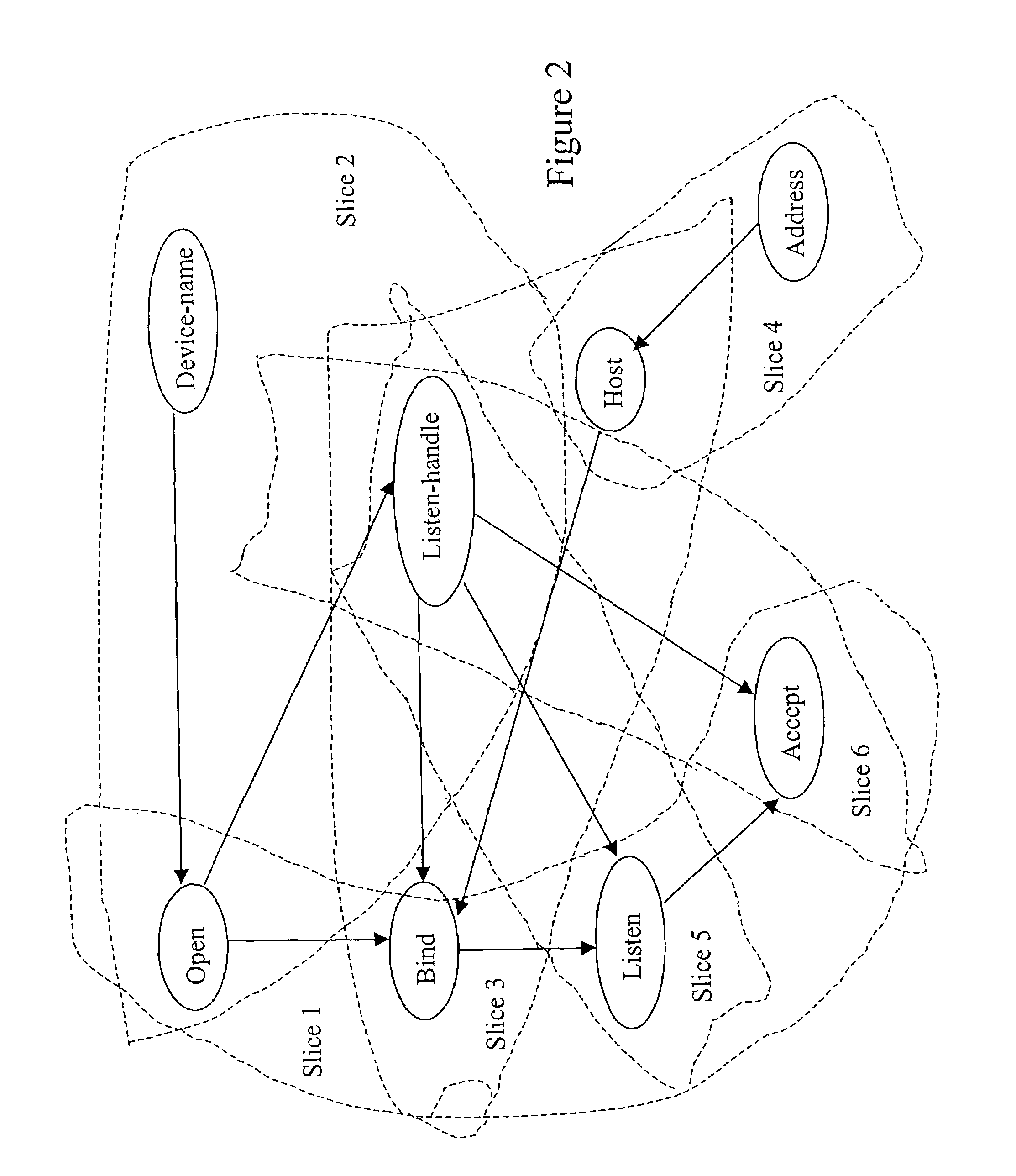Method and apparatus for extracting knowledge from software code or other structured data
a software code and structured data technology, applied in the field of knowledge representation and management, can solve the problems of complex dkba methods, inefficient methods, and often inadequate or unreliable software documentation
- Summary
- Abstract
- Description
- Claims
- Application Information
AI Technical Summary
Benefits of technology
Problems solved by technology
Method used
Image
Examples
Embodiment Construction
[0007]Embodiments of the present invention provide a method for representing knowledge in a knowledge base, the knowledge being represented by a set of one or more concepts and of one or more first type of relationships between two or more or said concepts, the method comprising the steps of:[0008]a) dividing the set of concepts into a plurality of sub-sets, each sub-set comprising a set of concepts related to a sub-set of the knowledge;[0009]b) dividing the relationships among the sub-sets of concepts; and[0010]c) providing a further set comprising all the concepts along with a second type of relationship that provides an association between each concept in the further set of concepts and one or more of the sub-sets of concepts and relationships.
[0011]One advantage of this method of representing knowledge is that it provides a structure that enables easier and more efficient belief revision and / or propagation. The method may also be combined with heuristic search techniques to impr...
PUM
 Login to View More
Login to View More Abstract
Description
Claims
Application Information
 Login to View More
Login to View More - R&D
- Intellectual Property
- Life Sciences
- Materials
- Tech Scout
- Unparalleled Data Quality
- Higher Quality Content
- 60% Fewer Hallucinations
Browse by: Latest US Patents, China's latest patents, Technical Efficacy Thesaurus, Application Domain, Technology Topic, Popular Technical Reports.
© 2025 PatSnap. All rights reserved.Legal|Privacy policy|Modern Slavery Act Transparency Statement|Sitemap|About US| Contact US: help@patsnap.com



